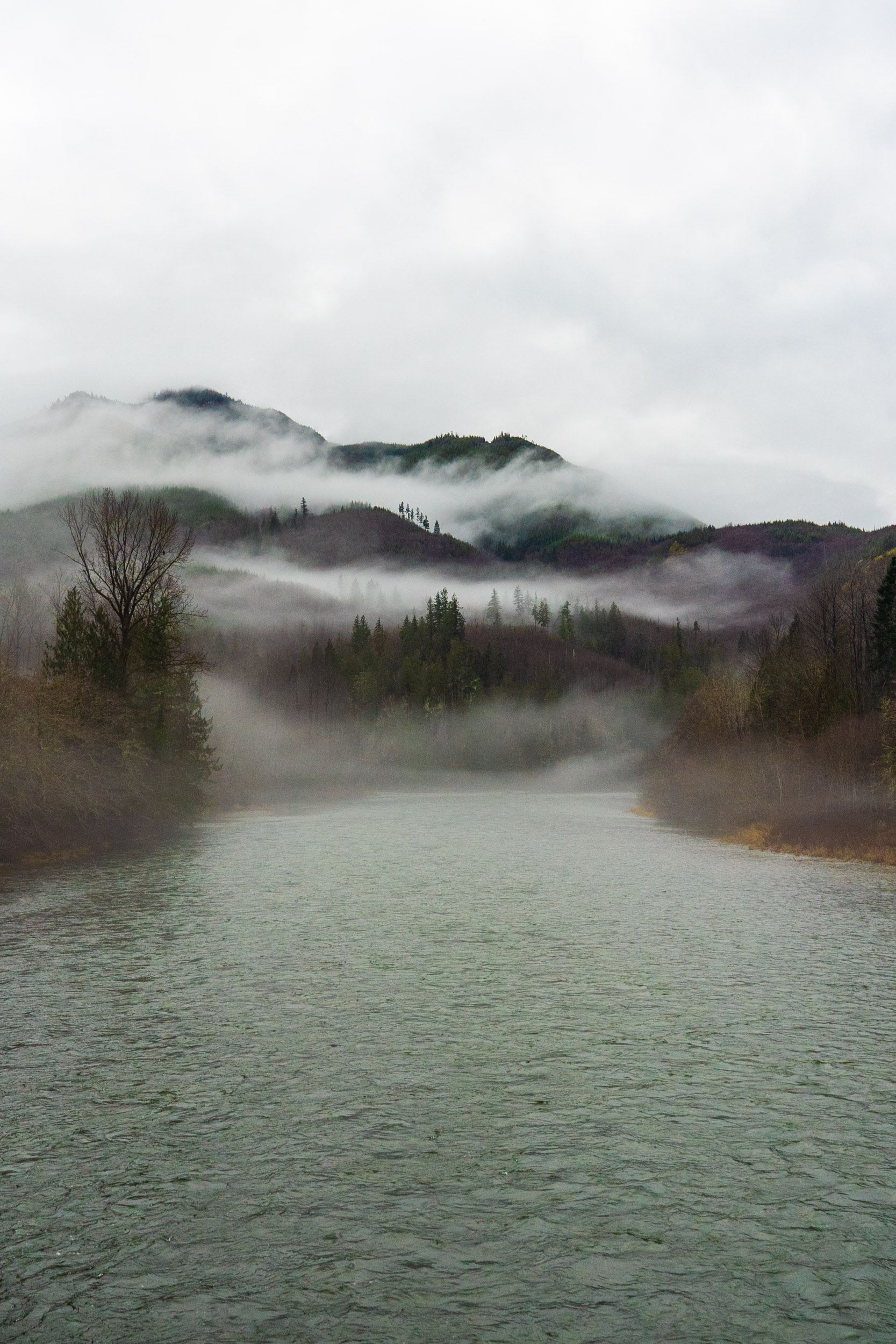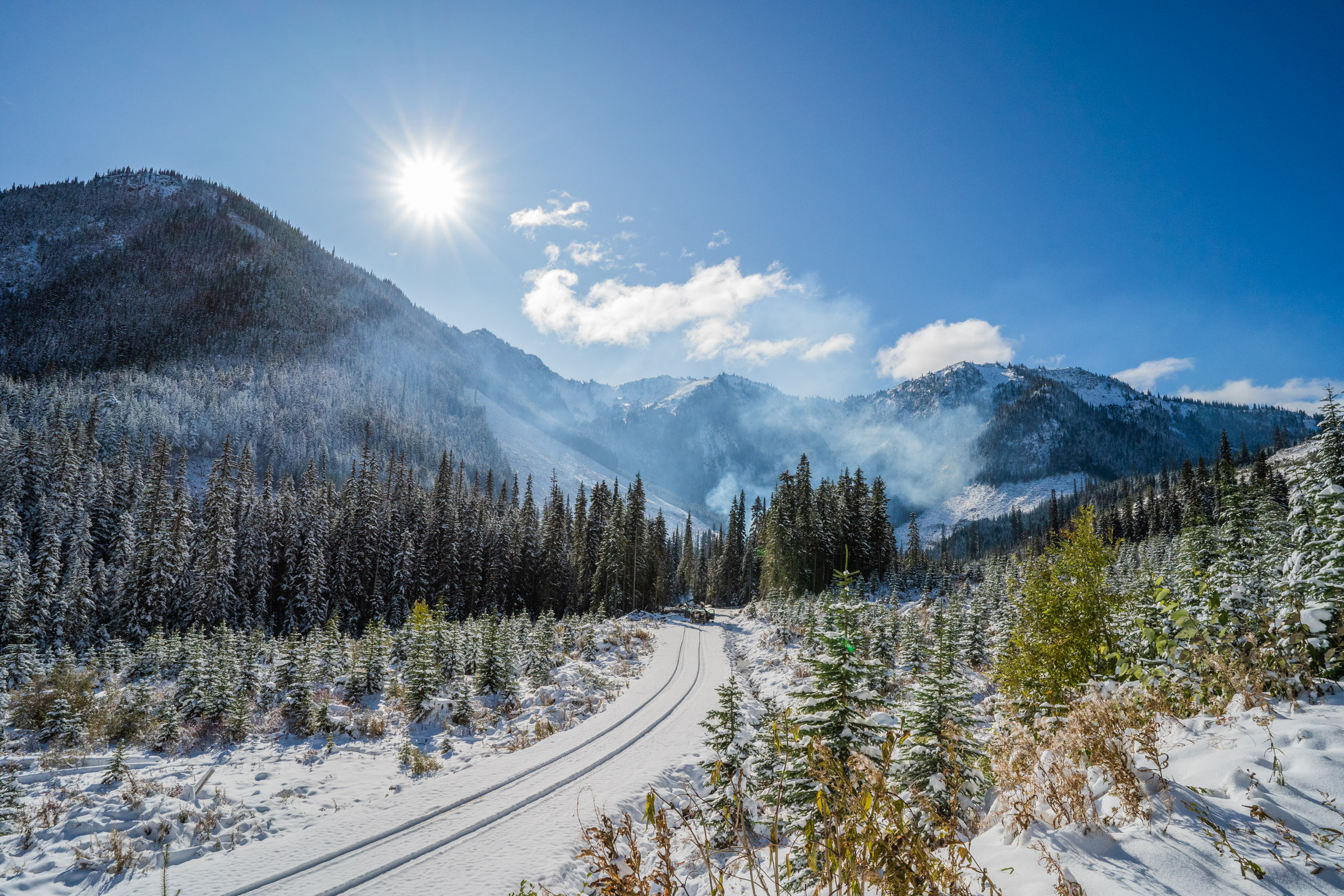
Hope for a huge, ancient and imperilled fish
First Nations are leading efforts to make sure lake sturgeon can find a home in...
Three years of negotiations, against a backdrop of international outrage from Indigenous communities, environmental groups and local governments, have ended plans by Imperial Metals to conduct exploratory drilling for copper and gold in the Skagit Doughnut Hole, a sensitive and unprotected area near the Canada-U.S. border, that contains the headwaters of the Skagit River and is encircled by Skagit Valley and E.C. Manning provincial parks.
The B.C. government has signed a memorandum of agreement with Imperial Metals and the Skagit Environmental Endowment Commission — a binational group charged with protecting the Upper Skagit watershed — allowing the company to hand over its mining rights in the 5,800-hectare area, also known as the Silverdaisy watershed, to the provincial government.
The agreement is a step toward “protecting the rich natural heritage of the Silverdaisy watershed and surrounding areas for generations to come,” Premier John Horgan said in a news release.
First Nations will be integral in deciding on future protection of the area as “since time immemorial, Indigenous Peoples, including the Stó:lō, Syilx and Nlaka’pamux First Nations, as well as the Swinomish Indian Tribal Community, Upper Skagit Tribe and Sauk Suiattle Tribe have depended upon the pristine ecosystem and diversity of wild salmon running in the Skagit River watershed,” the release states.
B.C. Environment Minister George Heyman said the province now has “the opportunity to explore how best to manage this important area and its uniquely valuable connection to the surrounding conservation areas,” in future discussions with Indigenous nations and other stakeholders.
Imperial Metals, which has held the Giant Copper mineral claims in the area east of Hope since 1988, will be paid $24 million for the surrender which will cover “all prior investment in the Giant Copper claim area,” says an Imperial Metals news release.
The decision to surrender the claims recognizes the “challenges of obtaining mineral exploration and development permits in this area,” according to the company, which says the claim area contains copper, silver and gold.
In 1995 the company surrendered some claims along the Skagit River, allowing the area to be included in Skagit Valley Provincial Park, in return for a commitment to allow mineral exploration and possibly mining in the remaining Giant Copper claims, according to the Imperial Metals release.
“Our objective as a mining company would have been to proceed with exploration of our claims, but, as a company that is responsive to the aspirations of Indigenous communities, government and neighbours, we support this agreement,” said Imperial president Brian Kynoch.
In addition to fears that mining would destroy the environment and pollute the Skagit River headwaters, the battle against Imperial Metals — led by an international coalition of almost 300 conservation, recreation and wildlife groups, together with First Nations, Tribes and elected officials — was fueled by the company’s history.
Imperial Metals owns and operates the Mount Polley mine, near Williams Lake, where, in 2014, the tailings dam failed, sending 25 billion litres of toxic copper and gold mining waste into surrounding waterways. Opponents to the Donut Hole exploration plans said no company should be drilling in the area, but particularly not one with Imperial Metals’ record.
The $24 million to pay out Imperial Metals will come from a mix of government and non-governmental organization funds. The province of B.C. and Washington State will each contribute $7 million, the Skagit Environmental Endowment Commission will add $5 million and the Nature Conservancy of Canada will also contribute $5 million.
The agreement is being applauded by MiningWatch Canada, but the payout also reveals a gaping hole in B.C.’s regulations that could cost taxpayers further millions of dollars if left unchecked, said Ugo Lapointe, MiningWatch Canada program coordinator.
It is likely the company made a significant return on their investment with the $24-million buyout, especially if the company never officially identified mineral resources in the area, Lapointe said.
If that assumption is right, it could send the wrong signal to some companies and investors and encourage claims in other sensitive areas of the province in order to get buyouts, he said.
“To avoid this risk, B.C. should modify its’ Mining Rights Compensation Regulation to limit compensation to only the actual spending made by companies and not include any speculative market value losses,” Lapointe said.
The Skagit River, which flows from Canada into the U.S. through Washington State, the North Cascades National Park and into the Skagit River Valley before reaching Puget Sound, is home to endangered bulltrout and supports the largest population of threatened steelhead and chinook salmon in Puget Sound. The river provides one-third of the freshwater running into Puget Sound and the Doughnut Hole and surrounding area provides habitat for threatened North Cascades grizzly bear populations and endangered spotted owls.

In 2018, the possibility of far-reaching environmental effects if logging and mining were allowed in the Doughnut Hole brought a strongly-worded letter to Horgan from former Seattle Mayor Jenny Durkan, who pleaded for the area to be incorporated into the B.C. park system as originally intended.
The Doughnut Hole was left out of provincial park designations because of mineral and logging claims dating back to the 1930s, a challenge for the Skagit Environmental Endowment Commission, which was tasked in 1984 with acquiring mineral and timber rights in the Upper Skagit Watershed “consistent with conservation and recreational purposes” as part of the High Ross Treaty, signed between the City of Seattle and British Columbia. The treaty came into being after lengthy negotiations, which resulted from public outcry over a 1942 plan by Seattle City Light, the city-owned power company, to raise the Ross Dam, which would have flooded vast areas of B.C. land. The treaty resulted in an agreement to not raise the dam for 80 years, in return for a power purchase deal, and the creation of the cross-border Skagit Environmental Endowment Commission.
A legacy of dam building on the Skagit brought about the treaty, which tasked the Skagit Environmental Endowment Commission, composed of four commissioners from each country, with the responsibility of resolving disputes over the dams and maintaining the environmental integrity of the shared river. For decades, the commission has been unsuccessful in its attempts to buy up the mining tenures in the Doughnut Hole.
In previous years, B.C.’s decision to move ahead with resource development has caused tension with the commissions. In 2015, for example, the former B.C. Liberal government handed out timber sale licences in the area, leading to an outcry from both sides of the border and claims that B.C. was breaking the treaty.

In December 2019, the NDP government halted all commercial logging in the area and said no future licences for the area would be issued by B.C. Timber Sales. But that still left the area open to mining prospects and, in 2019, an exploration application from Imperial Metals provoked intense opposition.
Now, the move to extinguish the tenures, is bringing praise from current Seattle Mayor Bruce Harrell who thanked Horgan for the shared commitment to jointly protect the environmental integrity of the headwaters of the Skagit River.
“On behalf of the City of Seattle and former Mayor Durkan, I want to thank Premier Horgan for honouring our shared commitment made in the High Ross Treaty to jointly protect the environmental integrity of the headwaters of the Skagit River,” Harrell said in a statement. “We commend the Skagit Environmental Endowment Commission, a model for transboundary collaboration for the past 35 years, for their vision and persistence in retiring these mineral tenures so that the province can permanently protect the Silverdaisy area.”
The decision to remove mining rights in the area is gaining praise from many quarters with Joe Foy, Wilderness Committee protected areas campaigner, describing it as terrific news.
“It has been a long time coming, so this victory is very sweet indeed,” he said.
“Now this beautiful, wild area can get the protection it deserves and people want,” said Foy, who would like to see the area protected through Indigenous-led conservation.
“Now that the mine claims are gone, we urge the B.C. government to work in partnership with Indigenous Peoples whose territory this is, to legislate protection for the entire Skagit headwaters region,” he said.
Tom Uniack, executive director of Washington Wild, the conservation organization which coordinated the international opposition coalition, said the agreement is “incredible news” and represents a win for all parties.
The protection is also being celebrated in the Swinomish Tribal Community, said Swinomish Tribal Community Chairman Steve Edwards.
“This is an extraordinary conservation success that will benefit current and future generations of Coast Salish people and we express our gratitude to all our conservation partners who advocated with us to protect our salmon and ecosystem forever,” he said.
Get the inside scoop on The Narwhal’s environment and climate reporting by signing up for our free newsletter. A $335 million funding commitment to fund...
Continue reading
First Nations are leading efforts to make sure lake sturgeon can find a home in...

We’re excited to share that an investigation by The Narwhal is a finalist for the...

A new documentary, Nechako: It Will Be a Big River Again, dives into how two...
